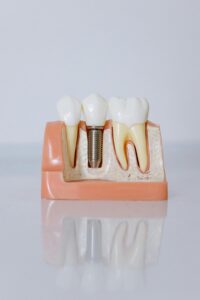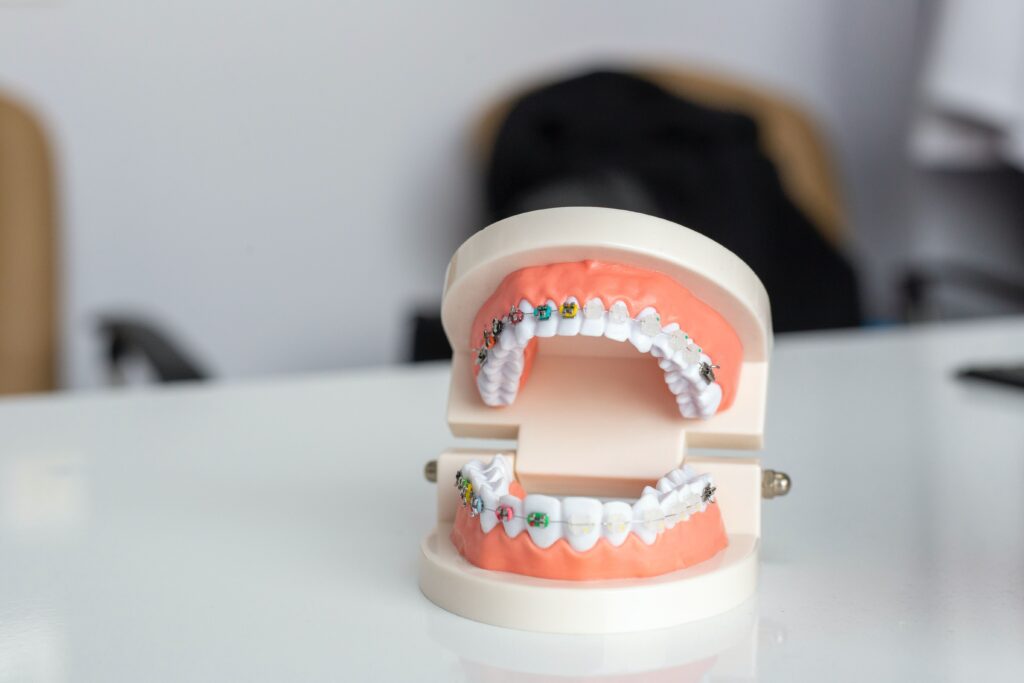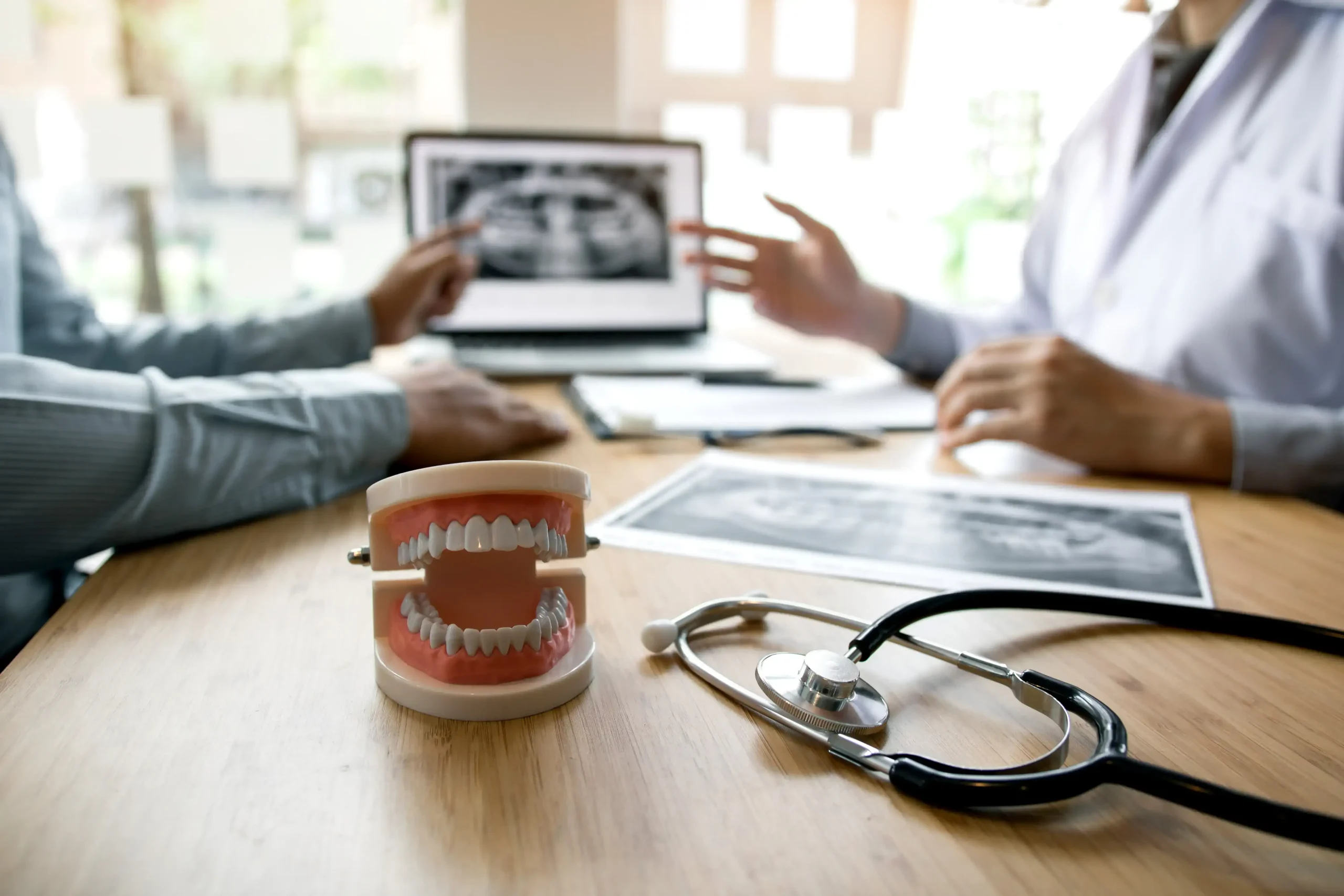How Do I Know My Teeth Are Healthy? 5 Signs of a Healthy Mouth
Dorset Dental – May 15 ,2023
Do you know if your teeth are healthy? Many people don’t realize that there are a few simple signs that can indicate whether or not your mouth is healthy. In this blog post, we will discuss 5 signs of a healthy mouth.
Table of Contents
5 Signs Your Teeth Are Healthy
1. Bright, White Enamel
Healthy teeth boast a bright, white enamel free from stains or discolouration. Though teeth colour may vary over time, a consistent white smile is a good indication that your teeth are in top shape.
2. Smooth, Intact Surfaces
Run your tongue over your teeth. If they feel smooth, with no rough spots or chips, it’s a sign of good dental health. Surfaces of your teeth should be even and free from damage.
3. Firm, Pink Gums
Healthy gums are pink and firm, without swelling or bleeding when you brush and floss. Pay attention to your gums and consult your dentist if you notice any changes, such as redness or swollen gums.
4. Fresh Breath
A neutral smell and consistently fresh breath indicate that your oral hygiene routine is effective. Chronic bad breath could be a sign of dental issues, such as tooth decay or gum disease.
5. No Sensitivity to Hot or Cold Foods
If you can comfortably enjoy hot or cold foods without experiencing sensitivity or pain, it’s another sign of healthy teeth and gums.
3 Ways to Check for a Healthy Mouth
1. Maintain a Regular Dental Hygiene Routine
Brush your teeth at least twice a day using a soft-bristled toothbrush and fluoride toothpaste. Floss daily to remove plaque and food particles stuck between your teeth.
2. Visit Your Dentist Regularly
Schedule routine dental check-ups at least twice a year or as recommended by your dentist. Regular dental visits help identify and address dental problems early on, preventing future dental issues.
3. Keep an Eye on Your Overall Health
Your overall health can impact your oral health. Pay attention to changes in your body, such as diabetes or hormonal imbalances, as they can affect your teeth and gums.
Oral Hygiene Tips for Healthy Teeth and Gums
1. Use Proper Brushing Techniques
Brush your teeth with gentle, circular motions for at least two minutes. Ensure that you clean all surfaces of your teeth, including the hard-to-reach areas.
2. Floss Regularly
Flossing removes plaque and debris from between your teeth, preventing gum disease and cavities. Use a gentle sawing motion, curving the floss around each tooth.
3. Visit Your Dental Hygienist
Schedule regular cleanings with your dental hygienist to remove plaque and tartar buildup that brushing and flossing might miss. They can also provide personalized recommendations for maintaining healthy teeth and gums.
How to Keep Your Teeth and Gums Healthy
1. Adopt a Balanced Diet
A balanced diet rich in calcium, phosphorus, and vitamin D promotes strong teeth and healthy gums. Crunchy fruits and vegetables help clean your teeth naturally, while vitamin C-rich foods support gum health.
2. Avoid Sugary and Acidic Foods
Limit your intake of sugary and acidic foods and drinks, as they can lead to tooth decay and enamel erosion. Sticky foods, in particular, can cling to teeth and increase the risk of cavities.
3. Stay Hydrated
Drinking water helps wash away food particles, neutralizes acids, and keeps your mouth moist. A well-hydrated mouth promotes the production of saliva, which is essential for maintaining a healthy oral environment.
4. Don’t Neglect Your Tongue
Clean your tongue daily using a tongue scraper or your toothbrush. Removing bacteria from your tongue can help prevent bad breath and improve overall oral hygiene.
Common Dental Problems and How to Address Them
Cavities: The Enemy of Healthy Teeth
- Prevention: Brush and floss regularly, avoid sugary snacks, and visit your dentist for check-ups.
- Treatment: Dentists can treat cavities with fillings, crowns, or, in severe cases, root canals.
Gum Disease: A Threat to Teeth and Gums
- Prevention: Practice good oral hygiene and schedule regular dental cleanings to prevent gum disease.
- Treatment: Early stages of gum disease can be reversed with improved oral care, while advanced stages may require professional intervention.
Tooth Sensitivity: Don’t Let It Get the Best of You
- Prevention: Use a toothpaste designed for sensitive teeth, avoid highly acidic foods, and maintain proper oral hygiene.
- Treatment: Consult your dentist for personalized recommendations to address tooth sensitivity.
Are Yellow Teeth Healthy?
While yellow teeth may not be as visually appealing as a bright, white smile, they can still be healthy. The natural colour r of teeth varies and can be influenced by factors such as genetics, age, and certain foods or drinks. Discolouration might not necessarily indicate poor oral health.
However, maintaining good oral hygiene and regular dental check-ups are crucial for ensuring your teeth are in top condition, regardless of their colour.
Top causes for yellow teeth include:
- Genetics: Some people naturally have a slightly yellow hue to their teeth due to genetic factors.
- Aging: Over time, the outer enamel layer thins, revealing the yellowish dentin beneath.
- Diet: Consuming foods and beverages with strong pigments, such as coffee, tea, red wine, and berries, can stain teeth over time.
- Smoking: Tobacco products can cause yellow or brown stains on teeth.
- Poor oral hygiene: Inadequate brushing and flossing can lead to plaque and tartar buildup, which can contribute to discoloration.
Medications: Certain medications, like tetracycline antibiotics, can cause teeth to become discolored.
Key Takeaways
Signs of healthy teeth and gums:
- Bright, white, and smooth teeth
- Pink and firm gums
- Fresh and odorless breath
- Teeth that are not sensitive to hot or cold foods
Tips for maintaining healthy teeth and gums:
- Brush your teeth twice a day
- Floss once a day
- Visit your dentist for regular checkups
- Eat a balanced diet that includes plenty of fruits, vegetables, and whole grains
- Avoid sugary drinks and foods
- Stay hydrated by drinking plenty of water
- Quit smoking
FAQs About Healthy Teeth and Gums
It’s recommended to visit your dentist for a check-up and cleaning at least twice a year or as advised by your dental professional.
Electric toothbrushes can be just as effective, if not more so, than manual toothbrushes. They’re especially helpful for those with limited dexterity or difficulty brushing.
Foods rich in calcium, phosphorus, and vitamin D, such as dairy products, leafy greens, and nuts, promote strong teeth. Crunchy fruits and vegetables also help clean teeth naturally.
Some natural teeth-whitening methods include using baking soda, eating crunchy fruits and vegetables, and avoiding staining substances like coffee, tea, and red wine.
To prevent tooth sensitivity, use a toothpaste designed for sensitive teeth, avoid highly acidic foods, and practice proper oral hygiene.

DONT'T DELAY BOOK TODAY!
The Scarborough Dentist You Can Trust 🦷
Do you want to have healthy teeth and gums?
Latest Posts

Lost a Tooth During Black Friday Shopping? What to Do — and How Dorset Dental Can Help
Black Friday shopping in Scarborough can be hectic. With crowded stores, tight spaces, and the rush to snag the best deals, accidents happen — including unexpected dental injuries. If you end up with a knocked-out tooth, knowing what to do in the moment can make all the difference. As your trusted Scarborough Dentist and Family Dentist, Dorset Dental is here to guide you through the steps and provide fast, reliable Emergency care when you need it most. How Does a Black Friday Accident Lead to a Knocked-Out Tooth? You’d be surprised how often it happens: A sudden elbow in a packed checkout line Slipping on a wet mall floor A shopping cart collision Rushing during door-crasher sales No matter how it occurs, a knocked-out tooth is a true dental emergency — but with quick action, the tooth may still be saved. What To Do Immediately After a Tooth Gets Knocked Out 1. Stay Calm — Every Minute Counts Your best chance of saving the tooth is to see a dentist near me within 60 minutes. 2. Locate the Tooth Pick it up by the crown only. Avoid touching the root, as this can damage delicate tissues. 3. Rinse Carefully If the tooth is dirty, rinse briefly with milk or saline.Do not scrub or use soap. 4. Try to Put the Tooth Back Gently place it back in the socket and bite down softly on gauze.This helps preserve the root. 5. Keep It Moist If Reinsertion Isn’t Possible Place the tooth in: Milk A tooth preservation kit Inside your cheek Never let it dry out. 6. Call Dorset Dental Immediately We reserve space for Emergency dental visits.Call 416-261-2946 while you are on the way. How Dorset Dental Treats a Knocked-Out Tooth At Dorset Dental — your community Scarborough Dentist — we will assess the tooth and determine the best treatment: ✔ Reimplantation If the tooth is viable, we can carefully secure it back in place. ✔ Splinting We stabilize the tooth so it can heal properly over the coming weeks. ✔ Root Canal Treatment Often recommended after reimplantation to ensure long-term success. ✔ Replacement Options If the tooth cannot be saved, our Family Dentist team offers: Dental implants Bridges Cosmetic restorations We’ll help you choose the option that best restores your smile. Why Choose Dorset Dental in Scarborough for Emergency Care? Trusted Family Dentist serving the Scarborough Bluffs community Fast, reliable Emergency dental appointments Modern technology Compassionate, experienced team Convenient location at 119 Dorset Road Whether you’re searching for a dentist near me or need urgent help, Dorset Dental is here to support you. Final Thoughts A Black Friday shopping mishap doesn’t have to mean losing your smile. Quick action — and a trusted Scarborough Dentist — can make all the difference. If you or a loved one experiences a dental Emergency, call Dorset Dental right away at 416-261-2946. Our team is ready to help you get back to smiling with confidence. 0/5 (0 Reviews)

How a Dental Cleaning Supports Heart Health — And Why You Should Book Before Year-End
Most people know that a Dental Cleaning helps keep teeth bright and gums healthy — but many don’t realize it can also help protect your heart health. At Dorset Dental, your trusted Scarborough Dentist, we care about your oral health and your overall well-being. With the end of the year approaching, now is the perfect time to schedule your cleaning and maximize your dental insurance before your benefits reset. The Mouth–Heart Connection Your oral health and heart health are deeply linked. Research shows that gum disease (periodontal disease) is associated with an increased risk of heart problems, including heart disease, clogged arteries, and stroke. Here’s why: 1. Inflammation Travels Gum disease causes inflammation in the mouth. When untreated, that inflammation can spread through the bloodstream and contribute to inflammation in blood vessels — a major risk factor for cardiovascular disease. 2. Bacteria Enter the Bloodstream Harmful bacteria from infected gums can enter the bloodstream and attach to blood vessels, potentially contributing to plaque buildup and reduced blood flow. 3. Shared Risk Factors Lifestyle factors like poor diet, smoking, and stress affect both gum health and heart health. This makes routine dental care essential for your overall well-being. Why Regular Dental Cleanings Matter A professional Dental Cleaning removes plaque and tartar buildup that you cannot eliminate with brushing or flossing alone. Regular cleanings help: Reduce gum inflammation Prevent gum disease Lower harmful oral bacteria Promote healthier blood vessels and circulation At Dorset Dental, we provide gentle, thorough cleanings to help patients from Scarborough, the Bluffs, and surrounding communities maintain excellent oral and overall health. Use Your Dental Insurance Before It Expires Most insurance plans reset on January 1st — meaning unused benefits do not carry forward. Booking your dental cleaning now helps you: Maximize your dental coverage Prevent gum disease and support heart health Avoid the end-of-year rush and limited availability Start the new year with a clean, healthy smile If you haven’t used your 2025 cleaning or exam benefits yet, now is the best time to book. Visit Your Trusted Scarborough Dentist — Dorset Dental Whether you’re in Scarborough, the Bluffs, or nearby communities, Dorset Dental is here to support your health with comprehensive care and comfortable visits. 📞 Call us: 416-261-2946📍 119 Dorset Road, Scarborough, ON M1M 2S9💻 Book online anytime! 0/5 (0 Reviews)

Don’t Lose Your 2025 Dental Benefits — Schedule Your Appointment Before the Year Ends!
As the year comes to a close, life in Scarborough, especially around the Cliffside and Bluffs neighbourhoods, gets busy with holiday plans, family gatherings, and festive activities. But before you dive into the celebrations, don’t forget one important thing — your dental health! If you haven’t used your dental benefits yet, now is the perfect time to schedule your appointment at Dorset Dental in Scarborough before the year wraps up. 🦷 Why You Should Book Before December 31st Most dental insurance plans reset on January 1st, meaning any unused benefits for cleanings, exams, or treatments will not carry over into the new year. That means if you delay your visit, you could lose hundreds of dollars in coverage that you’ve already paid for through your premiums. At Dorset Dental, conveniently located near the Scarborough Bluffs and Cliffside Village, we want to help you maximize your benefits and keep your smile healthy and bright all year round. ✅ Use Your 2025 Benefits For: Routine cleanings and checkups Fillings, crowns, or other restorative treatments Whitening or cosmetic touch-ups before holiday photos Periodontal maintenance or gum care Orthodontic adjustments and follow-ups 📅 Appointments Fill Up Fast Our schedule fills quickly in November and December as patients in Scarborough, Cliffside, and the Bluffs area book last-minute appointments to use their benefits. To ensure you get a time that works best for you and your family, book your appointment as soon as possible. 💙 We’re Here to Help If you’re not sure what your insurance covers or how much of your benefits remain, our friendly team can help you review your plan and make the most of it. Don’t wait until it’s too late — your future self (and your smile) will thank you! 📍 Dorset Dental119 Dorset Road, Scarborough, ON M1M 2S9📞 Call us today: 416-261-2946 0/5 (0 Reviews)




